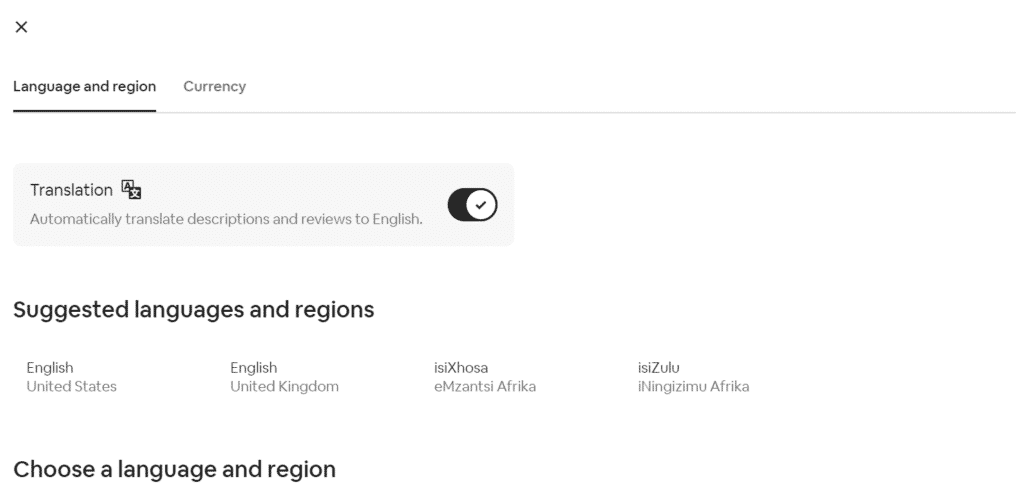We all know that content localization plays a huge role in the success of global brands. Just take a look at Coca-Cola, Airbnb and Netflix—they all heavily invest in localized content marketing and the payoffs are massive.
Properly tailoring your content to each of your target markets allows you to truly connect with international audiences. That’s why localized content should be integral to your global marketing strategy.
But how do you localize your content effectively? Where should you post your localized content? And what happens when your content localization efforts go wrong? Keep reading to find out.
See also: Global marketing standardization vs. localization: A helpful guide
What is content localization?

Content localization involves adapting your content to be more relevant to local audiences. This includes considering all nuances, cultural differences, preferences, references, symbols, currencies and current trends in each of your target markets.
The localization of content goes far beyond translating from one language to another. Proper content localization ensures that the content still conveys the same meaning and conjures up similar emotions for a region-specific audience.
Take Airbnb, for example. Their primary mission is to make people feel like they belong anywhere. To do this, their services need to be available in the languages of their hosts and guests, while also respecting their cultural, legal and local expectations. Airbnb is now supported in 62 different languages, allowing it to reach users worldwide.
When using the Airbnb website or app, users can select their language and region—for example, there are eight region-specific versions of English and 19 for Spanish. Depending on your location, the platform will automatically suggest languages.
As I’m based in South Africa, it suggests both English US and UK as well as isiXhosa and isiZulu to me:

See also: Translation vs. localization: What’s the difference and why should you care?
As you can see in the example above, effective localization also applies to adapting content for countries that speak the same language. For example, the language, references and channels your brand uses in the US and UK should be tailored. Although both countries speak English, they have different spellings, slang, nuances and frames of reference.
To deal with the spelling differences, Airbnb’s engineers have built an application that automates the process of adjusting the spelling of English words for the American, British and Canadian versions of the site. The site even swaps out ß for “ss” when converting from its German-German to Swiss German versions.
See also: American vs. British English: How they’re different and why it matters
Similarly, even if several countries are in close proximity to one another—for example, the DACH region or the Nordics—you may still need to localize your content for each region in certain messaging or campaigns. It’s important to know what differentiates them and localize your marketing accordingly.
“Even though the languages of Norwegian, Swedish and Danish are quite similar, they are not the same. Not everyone has the same exact cultural understanding in these different markets. You need to respect that and treat them differently.” – Lauren Pedersen, CMO at Airthings.
See also: Cultural marketing: Going beyond simple translations
Why is content localization important?
Content localization helps you connect with your target market by speaking to them in a way they can both understand and relate to. It can also give your brand a competitive edge, helping you expand your reach and establish a global presence.
According to Airbnb, “The online population continues to grow at a rate of nearly 1M per day, and only 9 out of 100 newcomers use, speak, or write in English.”
The internet and globalization have made it easier for brands to expand digitally into a global marketplace. But making your brand known in these markets requires more than translating your website or launching local social media accounts.
To be successful in global markets, you need to take your marketing a step further and customize your content to meet your audience’s local needs, pain points, interests and culture. This can involve adapting your ad campaigns to speak to the current affairs happening in the region, incorporating more local examples in blog posts or weaving in cultural nuances in your social media captions. Doing so will help you come across as more authentic and build trust with your audience.
See also: Marketing localization: Why investing in quality pays off
How do you localize content?

There are a few ways that you can localize your content. Here’s where to start:
1. Research your target audience
Before localizing content, you need to understand your audience in the region you’re targeting. Apart from general demographics, try to learn as much as possible about their behaviors, habits, cultural preferences, attitudes, pain points and greatest needs. This insight will help you ensure you’re not only speaking to them in a way they’ll understand but also in a way they’ll connect with.
The best way to do this is by consulting with someone familiar with daily life in the region. Locals know and understand the intricacies of life in that country better than anyone. They will be able to point out any potential holes in your content localization strategy while also ensuring that all content remains relevant to people living in that region.
See also: International audience research methods: How to reach new markets effectively
2. Prioritize which content you want to localize
Not all content needs to be localized. As Shaheen Samavati, VeraContent’s CEO, mentioned in a podcast episode: “You should only do as much as you can do well.”
You don’t need to localize all elements of your global marketing strategy. Unless you have a massive localization budget, you likely won’t have the resources to localize all content.
Prioritize the most important regions and channels to help you narrow down the list of content to be localized to a realistic volume that your team can handle.
Using Airbnb as an example, their engineers have built a system that prioritizes content by counting the number of users looking at specific text on their listings. This helps their translators prioritize their workload by focusing on the most used parts of the site.
Also, remember that not all content makes sense for all regions. Make sure to consult with someone on the ground who understands what type of content works there—and what doesn’t. This way, you can avoid spending your resources on localizing content when it isn’t effective.
“Father’s Day, for example, is super relevant in Austria, but not so relevant in Germany.”
– Adriana Carles, head of content and social media at Ladenzeile
There will also likely be a few pieces of content that are integral to your brand messaging that can easily be adapted across markets. For example, in July 2023, we worked with Too Good To Go on the localization of their UN’s International Day of Awareness of Food Loss and Waste Campaign for the Swedish market. The campaign included a lot of content for different assets: video copy, Instagram posts and stories, LinkedIn posts, emails to customers and partners, in-app messages, push notifications, website banners and in-store posters.
Because this campaign is so relevant to the brand’s core mission and values, it made sense to localize the content for each key region. Check out our work sample.


3. Use transcreation or creative translation methods
As mentioned, localization is more than translation. You need to get creative in translating from one language to another. Creative translation, also referred to as content transcreation, focuses on using the source text as a point of reference to create equally compelling content in the target language.
Transcreation can involve changing just a few words or sentences or completely rewriting the whole text—as long as it still carries the same essence of the original content. When transcreating, it’s so important to work with—or at least consult—a local in the region you’re targeting.
See also: Expert insights on the creative translation process
At VeraContent, we work with local community managers, content writers and translators to ensure we convey the right message in each region.
Here’s just one example of creative translation we’ve done for our client Brave Bison:
For this project, we aimed to establish a strong connection, resonance and entertainment value for the target audiences in their respective languages—Dutch and Spanish—while mirroring the original English version.
We led linguists who adapted cultural references from the source, ensuring the content’s core meaning stayed intact in target languages. The linguists had to approach the task with a creative mindset while also implementing SEO elements. Check out the work sample.


Tip: Ensure you have strong, well-written content in your source language. It’s much easier to translate and localize content when it’s written in a certain way—and with no typos!
See also: Choosing the right transcreation agency for your business
4. Don’t forget about your images
Be aware of cultural differences when selecting images to go with your content. Use imagery that relates to your local audiences, including the people highlighted in campaigns and colors used in graphics.
See also: Multilingual graphic design: Why it pays to hire specialists
If you’re not sure how to localize your images, then rather stick to globally recognized and accepted images, including:
- Nature or landscape images
- Globally recognized symbols like modes of transport or consumer goods
- Standardized symbols, like a stop sign or danger warning
- Text-free images
Images to avoid include:
- Any religious symbols
- Hand symbols and gestures
- Text-heavy images
- Images of obvious landmarks not in the region you’re targeting. For example, using an image of the Eiffel Tower for content aimed at encouraging Germans to do more local travel.
- Politics
- Humor that doesn’t translate well
See also: Social media localization: Go global without fresh content
Need help with adapting your content for local markets? Download our free worksheet to get started:

Get your free guide by filling in the form below!
When content localization goes wrong…

Unfortunately, no brand is immune to bad localization. Even big brands like Pampers, Ford and Pepsi have failed when launching into new markets.
Here are a few content localization examples not to follow:
When Pampers launched in Japan, they used an image of a stork delivering a baby on their packaging. And while that image makes sense for a lot of the world, it doesn’t in Japan. Because peaches, not storks, bring the babies to Japan.
Then there’s Ford, which launched its Pinto model in Brazil without realizing that “Pinto” is often interpreted in Brazilian Portuguese as a reference to a man with tiny genitalia. And Pepsi who translated their slogan “Brings you back to life” to “Brings your ancestors back from the grave” when launching in China.
While many might just laugh it off, content localization mistakes can seriously impact your brand, including completely ruining your reputation as a competitive business in the region.
Here’s how to avoid these types of localized content marketing mistakes:
- Don’t rely solely on machine translation
- Work with locals in each target region
- Avoid translating verbatim
- Do in-depth research on your local audience
- Understand that you may need to change your brand name, slogan and other key marketing content if it doesn’t translate well
- Stop trying too hard to push one particular message, idea or campaign in all markets. If it doesn’t work, drop it and find another way to promote your brand there
“Having a human behind your content does good things for your business. It makes people feel more connected with your brand, and that they can trust you.”
– Meag Gardner, creative translator
Another common mistake is underestimating the complexity and resources required to produce high-quality localized content. Many businesses start out trying to manage it all in-house but quickly realize how time-consuming it actually is.
Even Netflix shut down their in-house translation and subtitling team to rather rely on specialized third-party services to handle these tasks. That way, they can focus more on their core business offering.
Airbnb uses a mix of crowdsourcing and in-house translators. The company hires translators from its global community to start translations. Their in-house team then proofreads, keeping the brand’s tone.
See also: 5 ways to ensure a quality language localization
Where to post your localized content

Now that you know how to localize your content, what do you do with that content? Well, that comes down to your localization strategy. Before starting the content localization process, you need to prioritize which platforms you want to localize. Knowing this will impact your localization plan, so spend some time thinking about it.
Areas within your content strategy that you can localize include:
- Your website
- Multilingual blog posts
- Social media accounts—either all accounts or only specific ones
- Email marketing
- Paid marketing
- Lead magnets
- Customer support—including FAQs on your website
- Legal content if it plays an integral part of your customer relationships
See also: How to localize your website and why it matters
Make sure to monitor where you distribute your localized content and its impact. Once you see how your localized content marketing performs, you’ll know which areas to prioritize more.
Another way to help prioritize where to post your localized content is to focus on the content used in your customer lifecycle. Just like how you would guide a customer through the buying journey in your native language, your global customers will also buy this way and expect a similar path to follow. To get new customers, you need to adapt to their preferred language for communication.
You’ll already know which pieces of content perform best and provide the highest amount of value to your customers—that’s the high-value content that should be localized.
When to localize content
Your content forms the first impression of your brand when you enter a new market. While you don’t necessarily need to have localized all content before launching in the region, make sure that you have something tailored for that market and be ready to adapt to changes as they come up.
If global expansion is anywhere on your radar, consider content localization from the start—from structuring your website to make it easier to localize to creating time-coded scripts for videos and building templates and workflows.
Content localization isn’t as simple as translating a few blog posts. It’s an in-depth process that requires audience and market research, local insight and transcreation skills to get it right. If you need help localizing your website, blog posts, social media and other marketing collateral, get in touch with us at VeraContent—it’s what we do best.


